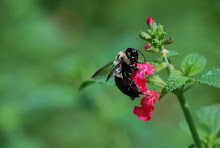There is still time to register for the Southern Garden Heritage Conference, a wonderful combination of gardening and history. This informative all-day conference includes lunch and provides seven contact hours for Georgia landscape architects.
2010 Southern Garden Heritage Conference
The State Botanical Garden of Georgia, 2450 South Milledge Avenue, Athens, Georgia 30605
Call 706-542-6156 or register online at www.uga.edu/botgarden.
Friday, February 19 Callaway Building Auditorium
9:00 am – 4:00 pm members $95; non-members $110
The State Botanical Garden of Georgia is pleased to host the Southern Garden Heritage Conference, which brings an audience from throughout the Southeast. Robin Salmon will open the conference with a lecture about garden sculpture and close the conference with a presentation about Brookgreen Gardens, one of America's finest sculpture gardens. Sue Burgess will provide a brief history of efforts to save the historic Root House in Marietta and create a garden of the period. Keyes Williamson will provide an update on work being done to preserve the Elizabeth Lawrence Garden in Charlotte. John Waters and Jim Cothran will provide a look into the architecture and gardens of Savannah and their interrelationships. And Gerard Krewer will speak about some of Georgia's rare and unusual fruits-some familiar and some unfamiliar. Amateurs and professionals alike are sure to find this conference interesting and informative.
AGENDA
9:00 - 9:15 Opening Remarks - Dr. Jeff Lewis
9:15 - 10:00 A Brief History of American Garden Sculpture - Robin Salmon,
Information about the origins of garden sculpture in America, and examples of important works in that field from the 19th Century to the present will be discussed.
10:00 - 10:30 Break
10:30 -11:15 The Root House, A Mid-Nineteenth Century Middle Class Merchant’s Home: Challenges of Recreating the Historic Southern Landscape in a Hostile 21st Century Urban Environment - Sue Burgess
The Root House Garden is designed to reflect the gardening practices of the mid-19th century. The Root’s garden in the 19th century would have contained plants that were ornamental, medicinal, or edible, or a combination of types. The garden is planted with vegetables, culinary herbs, medicinal herbs, fruit trees, decorative flowers and flowering shrubs. All the plants have been researched for their availability in Georgia at the time the Root House was built.
11:15 - 12:00 The Elizabeth Lawrence Garden - Keyes Williamson
Elizabeth Lawrence had already established herself as a preeminent garden writer when, in 1949, she moved to Charlotte, North Carolina. Over the next three decades, Lawrence cultivated an overflowing garden within the confines of a typical, modest residential lot measuring 70’ by 225’. Lawrence used her garden as a horticultural laboratory, where she cultivated a wide range of plants with an eye towards their usefulness in the Southern Garden. This presentation will examine Lawrence’s contribution to gardening in the region using the garden as a vehicle to explore her life and writing.
12:00 - 1:00 Lunch
1:00 - 1:45 The Architecture and Gardens of Savannah - John Waters & Jim Cothran
Established in 1733, Savannah was America’s first planned city. Noted for its fine architecture, parks, and gardens, Savannah retains its romantic character and attracts thousands of tourists each year to experience its picturesque charm. The presentation will focus on some of Savannah’s finest historic buildings, notable parks, and ornamental gardens.1:45 - 2:30 Rare and Unusual Fruits of Georgia - Gerard KrewerLearn about the fascinating history of the rare and unusual fruits of Georgia from the nearly semi-tropical coastal islands to the Blue Ridge mountains.
2:30 - 3:00 Break
3:00 - 3:45 Brookgreen Gardens Past and Present - Robin Salmon
An overview of the significance of the land known as Brookgreen Gardens including its historic landscape, its role as the first public sculpture garden in America, the history of its founders Archer and Anna Huntington, and highlights of its collections through the years.
3:45 - 4:00 Closing Remarks

No comments:
Post a Comment